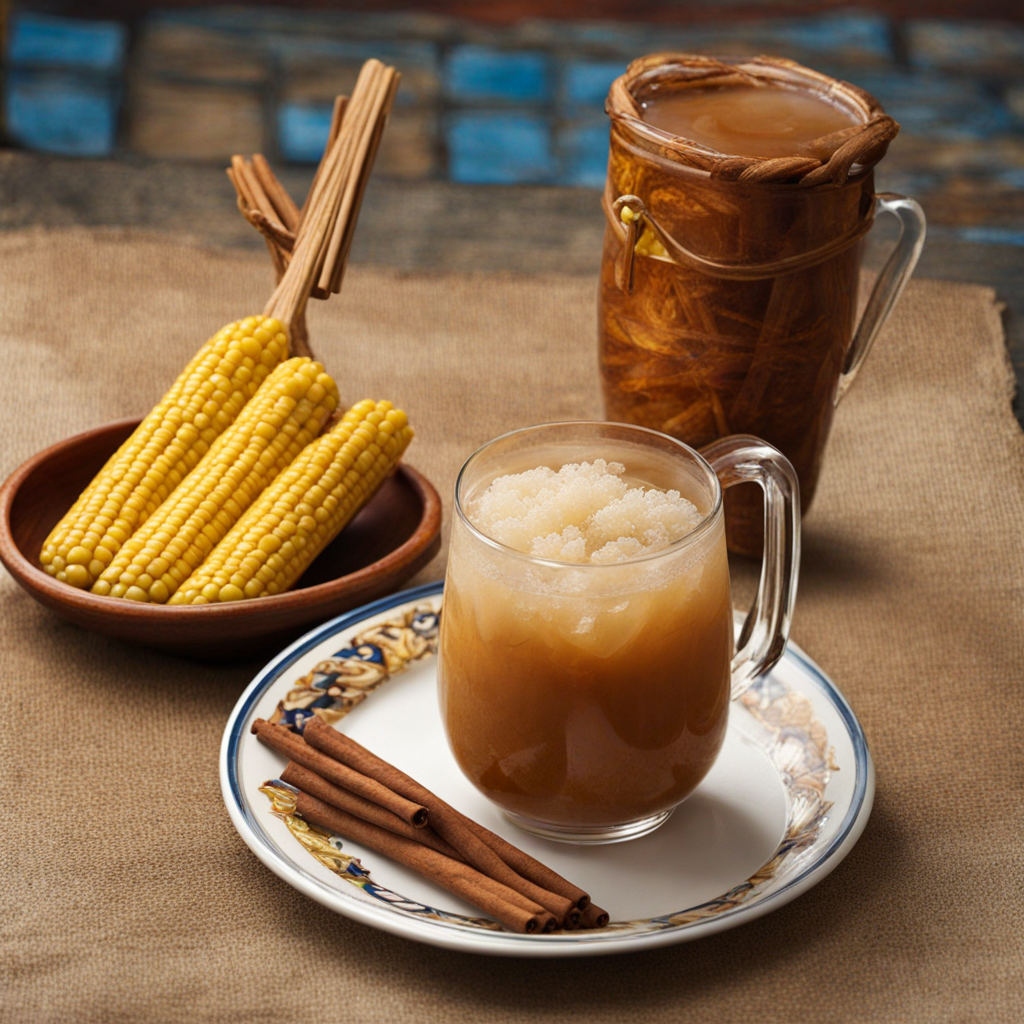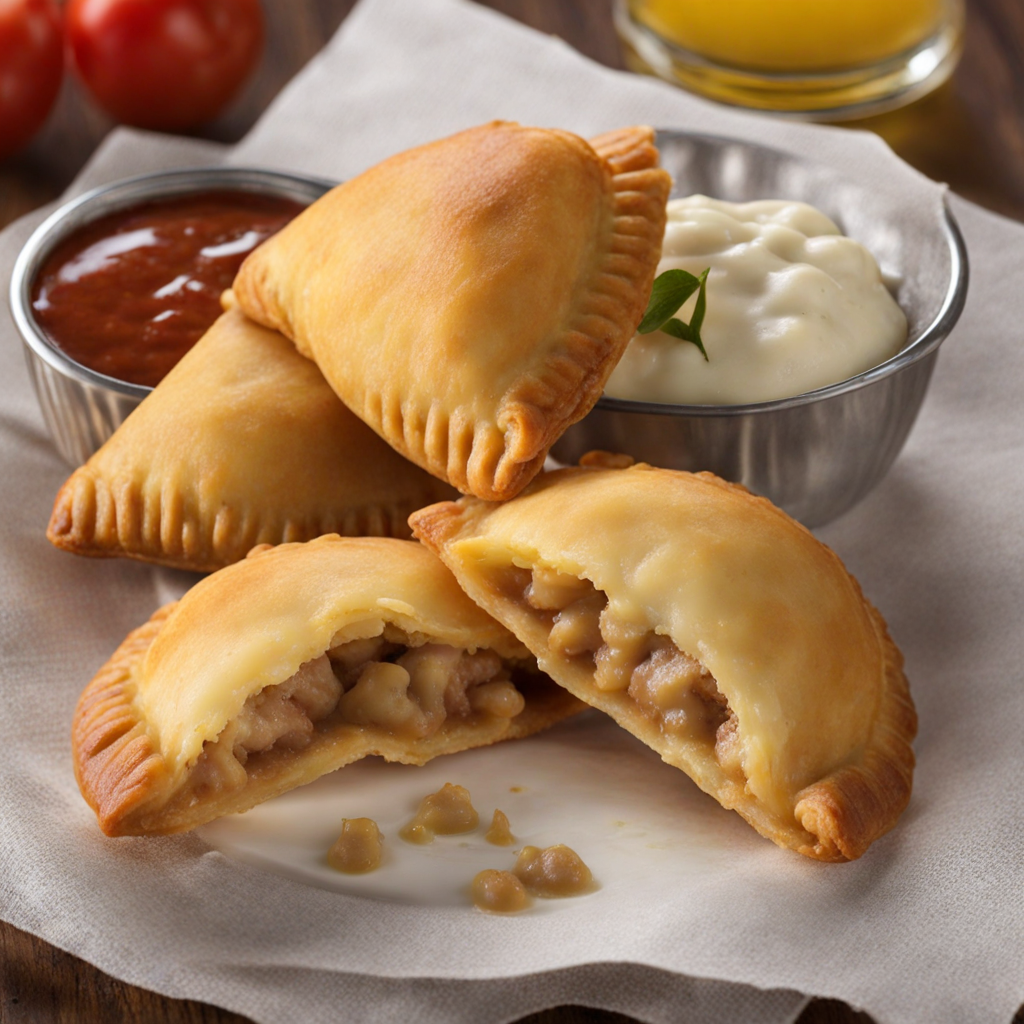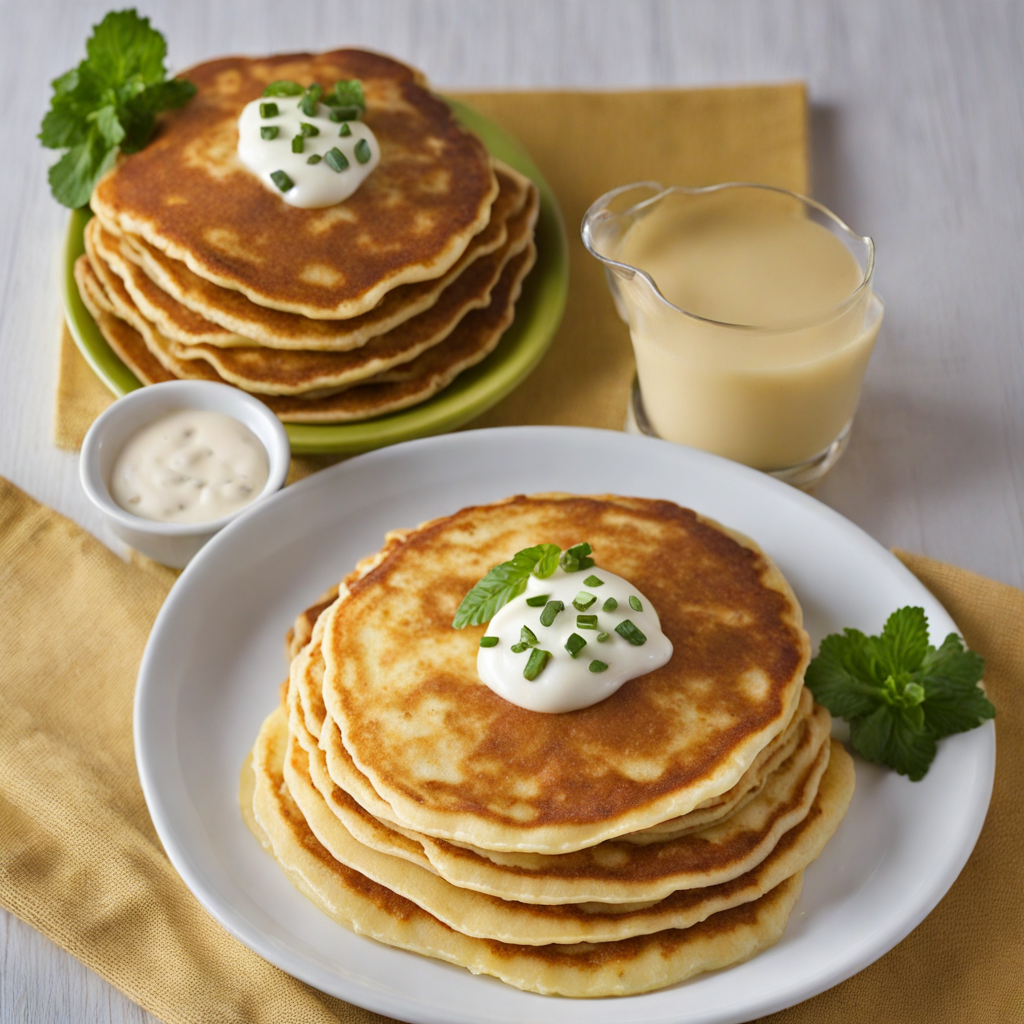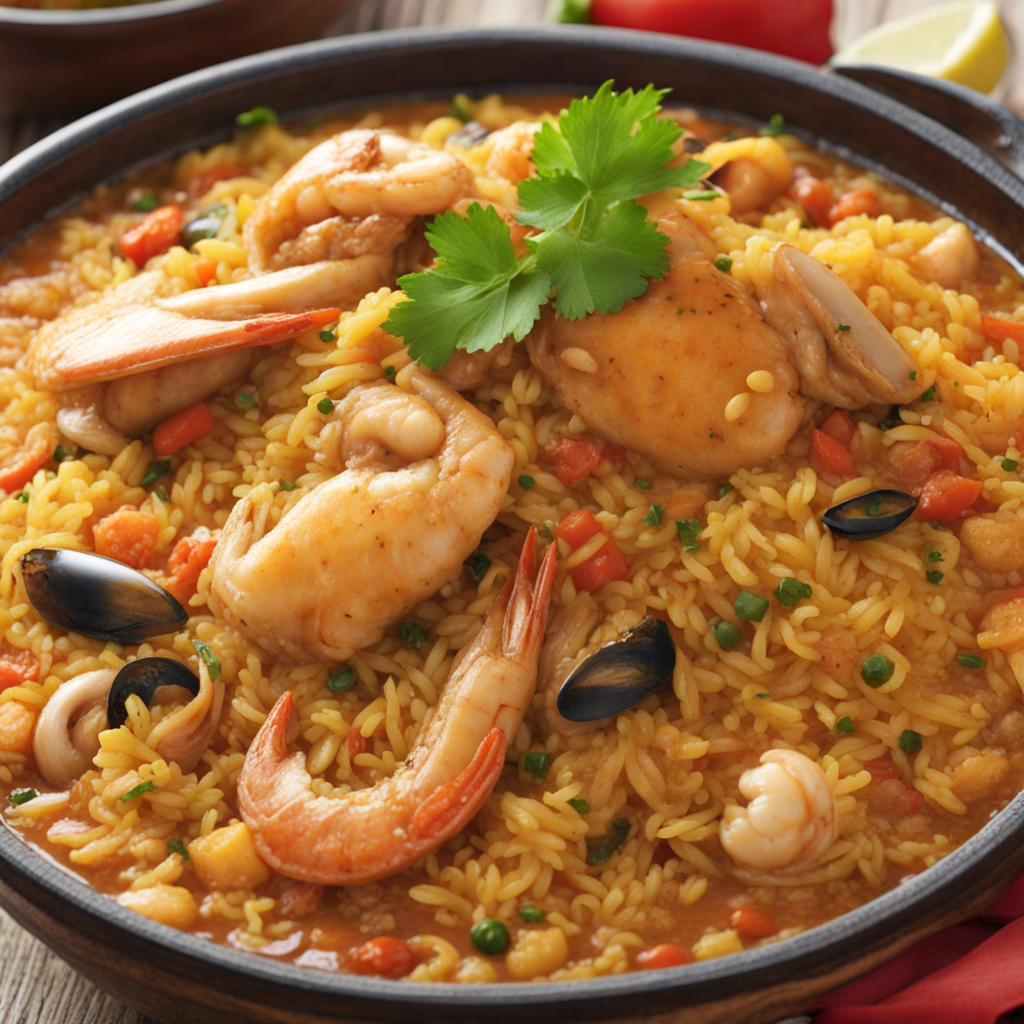Chicha
Chicha is a traditional Venezuelan beverage that captures the essence of the country’s rich culinary heritage. This sweet, creamy drink is typically made from fermented rice or corn, which is blended with sugar, milk, and spices. The base ingredient, whether it be rice or corn, is cooked until soft, then ground to create a smooth mixture. The fermentation process gives Chicha its unique tangy flavor, often complemented by the addition of cinnamon or vanilla, creating a harmonious balance of sweetness and subtle spice that dances on the palate. One of the most delightful aspects of Chicha is its versatility. While the classic version remains a favorite, variations abound across regions, each with its own twist. Some may incorporate fruits like mango or coconut, while others might use different grains or sweeteners. The resulting drink can range from thick and creamy to light and refreshing, making it suitable for any occasion, whether enjoyed as a midday refresher or a dessert-like treat. Served chilled, Chicha is both satisfying and invigorating, perfect for cooling down on a hot day. Chicha is more than just a drink; it’s a cultural experience that invites you to savor the flavors of Venezuela. Often sold by street vendors, it brings a sense of community as people gather to enjoy this beloved beverage together. Sipping Chicha can transport you to the vibrant streets of Venezuela, where the aromas of spices blend with the sounds of lively conversations. With each sip, you’ll discover layers of flavor that reflect the country’s diverse ingredients and traditions, making it a must-try for anyone looking to explore new culinary horizons.
How It Became This Dish
Chicha: A Journey Through Venezuela's Culinary Heritage Chicha is a traditional beverage that holds a prominent place in the culinary landscape of Venezuela, reflecting the country’s rich history, diverse cultures, and social practices. With roots that extend deep into the pre-Columbian era, this fermented drink has undergone various transformations, evolving into a symbol of community and celebration through the ages. #### Origins: A Pre-Columbian Legacy The origins of chicha can be traced back to the indigenous peoples of the Americas, with its earliest forms likely emerging in the Andean regions. In these ancient societies, chicha was primarily made from maize (corn), a staple crop that held both nutritional and spiritual significance. The process of making chicha involved fermenting the corn, which was often chewed by the makers to help facilitate fermentation through the enzymes in saliva. The result was a mildly alcoholic beverage that was consumed during rituals, celebrations, and communal gatherings. In Venezuela, the indigenous groups, such as the Caribs and Arawaks, crafted their variations of chicha, utilizing local ingredients and techniques. Over centuries, these indigenous practices laid the groundwork for the chicha we see today. The drink was not only a source of sustenance but also served as a means of social cohesion, connecting people through shared traditions and communal experiences. #### Cultural Significance: Beyond a Beverage Chicha transcends mere consumption; it is a cultural artifact that encapsulates the Venezuelan spirit. In many communities, the act of preparing and sharing chicha is a communal affair. Families and friends gather to create this beloved drink, passing down recipes and methods from generation to generation. This communal aspect fosters a sense of belonging and continuity, reinforcing social bonds and cultural identity. Moreover, chicha is often associated with festivities and celebrations, serving as a unifying force during important events such as weddings, religious ceremonies, and public festivals. In these contexts, chicha becomes more than a refreshment; it transforms into a symbol of joy, hospitality, and shared heritage. The drink's presence at these gatherings underscores its role as both a cultural marker and a source of pride for many Venezuelans. #### Development Through Time: Transformation and Adaptation As Venezuela underwent significant social, political, and economic changes, so too did the production and consumption of chicha. During the colonial period, Spanish colonizers encountered indigenous practices and began to adapt them, introducing new ingredients and methods. Sugar, for instance, became a common addition, leading to sweeter varieties of chicha that appealed to European palates. This fusion of indigenous and European culinary traditions marked a significant turning point in the evolution of chicha. By the 19th century, chicha had become widely popular across various social classes in Venezuela. Street vendors began selling it in urban areas, making it a common sight in marketplaces and during public festivities. The drink’s accessibility contributed to its proliferation, allowing it to permeate diverse facets of Venezuelan society. Chicha evolved into a beverage enjoyed by all, regardless of socioeconomic status. In the 20th century, chicha continued to adapt to changing tastes and lifestyles. The introduction of commercial production methods led to the emergence of bottled chicha, which made the drink even more accessible. This shift, however, sparked debates about authenticity and the preservation of traditional practices. Many artisans and families sought to maintain the traditional handmade methods, emphasizing the importance of cultural heritage amidst modernization. #### Regional Variations: A Diverse Tapestry Chicha is not a monolithic beverage; rather, it exists in myriad regional forms that reflect the diverse cultures and ingredients found throughout Venezuela. In the Andean regions, for instance, chicha is often made with barley or rice, resulting in a thicker texture and a unique flavor profile. In contrast, coastal areas may incorporate tropical fruits like pineapple or coconut, creating a refreshing, fruity variant. Each region’s chicha is often accompanied by its own set of rituals and customs. In rural communities, chicha may be served in ceremonial settings, while urban areas might see it enjoyed casually at street stalls. This diversity of preparation and consumption highlights the adaptability of chicha, allowing it to resonate with different communities while still honoring its ancestral roots. #### Contemporary Chicha: Revival and Innovation In recent years, there has been a resurgence of interest in traditional Venezuelan foods, including chicha. As the global food movement emphasizes local and authentic culinary practices, many Venezuelans are reclaiming their culinary heritage. Artisanal chicha makers are experimenting with flavors and ingredients, blending traditional recipes with modern twists to cater to contemporary tastes. Social media has played a crucial role in this revival, allowing food enthusiasts to share their chicha-making experiences and showcase innovative recipes. This digital platform has connected artisans and home cooks alike, fostering a sense of community that echoes the drink’s historical significance. Food festivals and cultural events now frequently feature chicha, further elevating its status as a beloved national beverage. #### Conclusion: A Drink of the People Chicha is more than just a beverage; it is a living testament to Venezuela’s rich history and cultural identity. From its indigenous origins to its contemporary iterations, chicha embodies the spirit of community, celebration, and resilience. It serves as a reminder of the intricate connections between food, culture, and identity, showcasing how a simple drink can encapsulate the essence of a nation. As Venezuela continues to navigate the complexities of modern life, chicha remains a cherished symbol of its past, present, and future—a drink that nourishes not only the body but also the soul.
You may like
Discover local flavors from Venezuela







